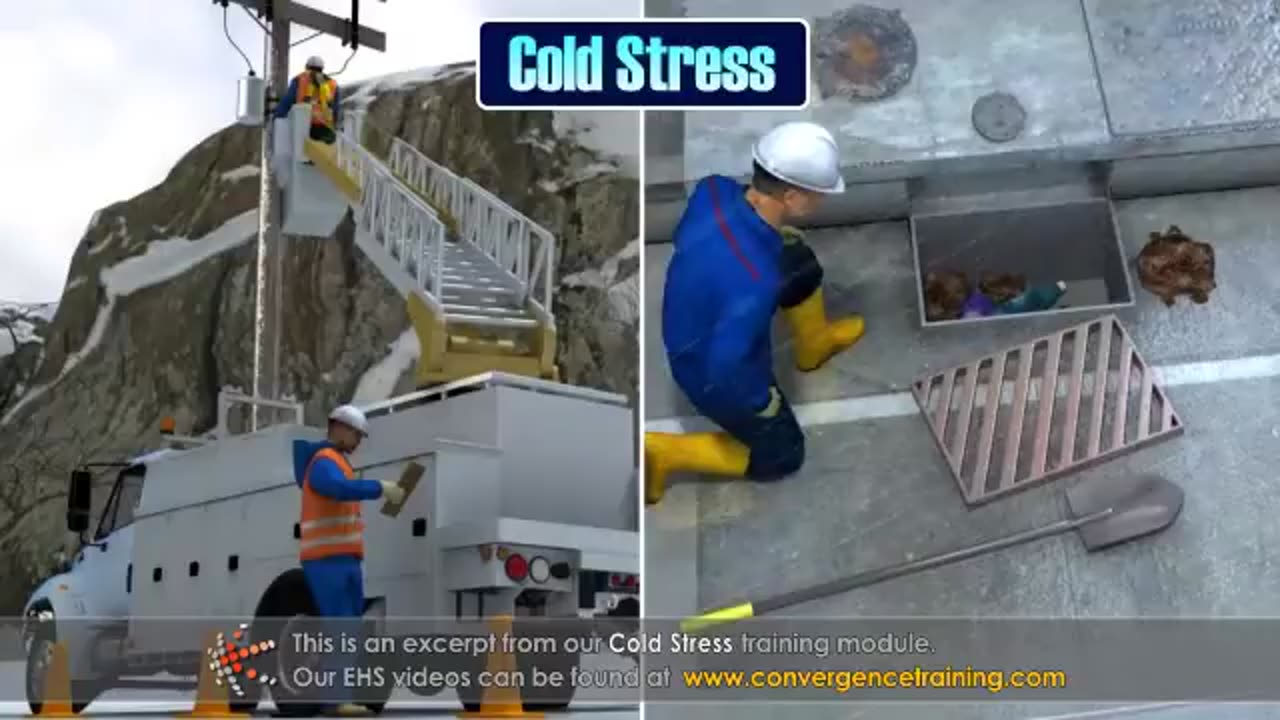Premium Only Content

Cold Stress Training
Cold stress training is designed to educate workers or individuals on how to recognize, prevent, and respond to cold stress injuries caused by exposure to low temperatures. These injuries can range from frostbite to hypothermia, and they often occur in outdoor environments or in places with uncomfortably low temperatures, such as freezers or refrigerated warehouses.
Key components of cold stress training typically include:
1. **Understanding Cold Stress**:
- What cold stress is and how it affects the body.
- The symptoms of common cold stress-related conditions such as frostbite, hypothermia, and trench foot.
2. **Risk Factors**:
- The factors that increase the risk of cold stress, such as wet clothing, wind, inadequate nutrition, and fatigue.
- How certain factors, like age, medical conditions, or medication, can increase susceptibility to cold stress.
3. **Prevention Methods**:
- How to dress appropriately (layering clothing, choosing materials like wool, and wearing insulated footwear).
- The importance of staying dry and how to manage sweating.
- How to schedule work and breaks in cold environments, including the use of shelters or warming areas.
4. **Recognizing Early Signs**:
- Early warning signs of cold stress conditions (e.g., numbness, shivering, confusion, slurred speech).
- How to identify frostbite, hypothermia, and other cold-related issues.
5. **First Aid and Treatment**:
- Immediate first-aid steps for conditions like frostbite and hypothermia.
- How to warm a person safely without causing further damage.
- When and how to seek medical assistance.
6. **Emergency Procedures**:
- Clear protocols for emergency response in cold environments.
- How to evacuate or provide aid during a cold stress emergency.
Cold stress training is especially important for workers in industries like construction, outdoor service roles, transportation, and anyone working in cold storage or refrigeration. It helps reduce the likelihood of cold-related injuries and can be a lifesaver in harsh conditions.
-
 7:58
7:58
HSESafetyInformation
1 month agoAuthentic Peshawari Rosh _ Namkeen Gosht Recipe __ Traditional KPK and Baluchistan
581 -
 LIVE
LIVE
Akademiks
6 hours agoDay 1/30 Kanye West Interview Part 2 OTW. Young Thug Probation REVOKED? Lil Baby Putting Hits on Ppl
2,701 watching -
 1:10:48
1:10:48
Man in America
12 hours agoPam Bondi Wants the DEATH PENALTY—But Was Mangione FRAMED? The Evidence Will SHOCK You
61.9K30 -
 1:30:51
1:30:51
Glenn Greenwald
11 hours agoSubstack CEO on Protecting Writers from Speech Crackdowns; Week in Review: Matt Taibbi's Censorship Hearing Testimony, Fascism Expert Flees the U.S., and More | SYSTEM UPDATE SHOW #433
168K89 -
 10:57:58
10:57:58
Dr Disrespect
16 hours ago🔴LIVE - DR DISRESPECT - PGA TOUR 2K25 - ONLINE RANKED UNDEFEATED
177K25 -
 1:59:49
1:59:49
2 MIKES LIVE
12 hours ago2 MIKES LIVE #200 It's our 200th Show with guests Paul Kanitra and Dan Nunn!
68.6K8 -
 21:41
21:41
JasminLaine
9 hours agoCarney HUMILIATED—Danielle Smith DESTROYS 'Garbage Polls' & Trump RUINS His Plan
67.7K25 -
 1:04:02
1:04:02
Film Threat
11 hours agoSUPERMAN! DISNEY! DRAGONS! LIVE FROM CINEMACON! | Film Threat After Dark
26.1K1 -
 5:10:00
5:10:00
DoomGnome
12 hours agoAdventures with DoomGnome: Fable Anniversary, REDUX Mod + Others, ROAD TO 500!
27.2K -
 55:21
55:21
BonginoReport
11 hours agoNashville Shooter Was Afraid Of Being Labeled a Racist - Nightly Scroll w/Hayley Caronia (Ep.18)
151K98